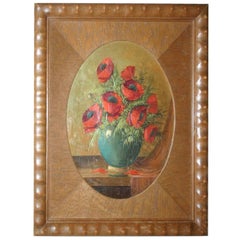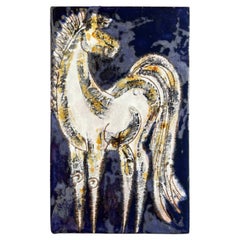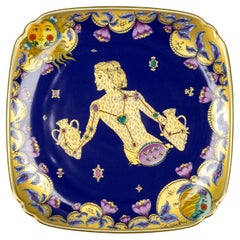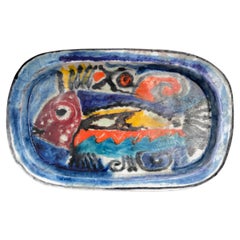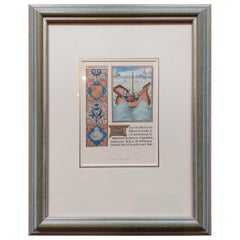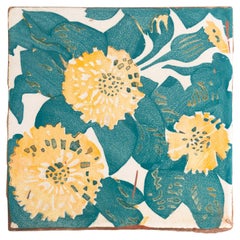Continental Europe - Decorative Art
Early 20th Century Dutch Art Deco Continental Europe - Decorative Art
Wood
Mid-20th Century German Mid-Century Modern Continental Europe - Decorative Art
Ceramic, Pottery, Stoneware
1970s German Vintage Continental Europe - Decorative Art
Porcelain
1950s Italian Mid-Century Modern Vintage Continental Europe - Decorative Art
Ceramic
Mid-19th Century Antique Continental Europe - Decorative Art
Paper
Early 20th Century Spanish Jugendstil Continental Europe - Decorative Art
Ceramic
Early 20th Century Continental Europe - Decorative Art
Paper
Early 19th Century Antique Continental Europe - Decorative Art
Paper
21st Century and Contemporary Polish Organic Modern Continental Europe - Decorative Art
Stainless Steel
Early 19th Century Antique Continental Europe - Decorative Art
Paper
Late 19th Century Antique Continental Europe - Decorative Art
Paper
1970s Italian Mid-Century Modern Vintage Continental Europe - Decorative Art
Ceramic
Mid-20th Century Italian Mid-Century Modern Continental Europe - Decorative Art
Gold, Silver
1970s European Mid-Century Modern Vintage Continental Europe - Decorative Art
Ceramic
1890s Dutch Antique Continental Europe - Decorative Art
Porcelain
Early 1900s Austrian Art Nouveau Antique Continental Europe - Decorative Art
Metal, Enamel, Iron
Late 20th Century Balinese Continental Europe - Decorative Art
Paint, Textile
21st Century and Contemporary Italian Continental Europe - Decorative Art
Paper
Mid-18th Century Antique Continental Europe - Decorative Art
Paper
1960s Spanish Mid-Century Modern Vintage Continental Europe - Decorative Art
Fabric
Late 19th Century Antique Continental Europe - Decorative Art
Paper
1960s German Vintage Continental Europe - Decorative Art
Linen, Paper
Mid-20th Century Italian Art Deco Continental Europe - Decorative Art
Alabaster, Metal
1940s Chinese Mid-Century Modern Vintage Continental Europe - Decorative Art
Wood, Paper
Late 19th Century Antique Continental Europe - Decorative Art
Paper
Mid-20th Century Danish Mid-Century Modern Continental Europe - Decorative Art
Ceramic, Pottery, Wood, Oak
21st Century and Contemporary Italian Neoclassical Continental Europe - Decorative Art
Wood, Paper
Mid-19th Century Antique Continental Europe - Decorative Art
Paper
2010s British Post-Modern Continental Europe - Decorative Art
Oak
Mid-19th Century Antique Continental Europe - Decorative Art
Paper
Early 19th Century Italian Empire Antique Continental Europe - Decorative Art
Wood
Early 19th Century Italian Empire Antique Continental Europe - Decorative Art
Wood
21st Century and Contemporary Italian Continental Europe - Decorative Art
Paper
Early 20th Century Italian Art Deco Continental Europe - Decorative Art
Wood, Paper
Early 1900s German Folk Art Antique Continental Europe - Decorative Art
Antler, Wood
1970s Chinese Chinoiserie Vintage Continental Europe - Decorative Art
Silk, Glass, Wood
1970s Moroccan Tribal Vintage Continental Europe - Decorative Art
Wool
Early 20th Century German Arts and Crafts Continental Europe - Decorative Art
Metal, Iron
21st Century and Contemporary Italian Modern Continental Europe - Decorative Art
Brass
1970s French Mid-Century Modern Vintage Continental Europe - Decorative Art
Ceramic
Early 19th Century Antique Continental Europe - Decorative Art
Paper
Late 19th Century Antique Continental Europe - Decorative Art
Paper
19th Century Antique Continental Europe - Decorative Art
Paper
1990s Balinese Continental Europe - Decorative Art
Wood
21st Century and Contemporary Polish Minimalist Continental Europe - Decorative Art
Stainless Steel
21st Century and Contemporary Polish Organic Modern Continental Europe - Decorative Art
Stainless Steel
21st Century and Contemporary Polish Organic Modern Continental Europe - Decorative Art
Stainless Steel
Mid-20th Century German Mid-Century Modern Continental Europe - Decorative Art
Porcelain
1960s Czech Mid-Century Modern Vintage Continental Europe - Decorative Art
Metallic Thread
1950s Austrian Mid-Century Modern Vintage Continental Europe - Decorative Art
Brass
Late 19th Century German Renaissance Antique Continental Europe - Decorative Art
Canvas
1970s French Mid-Century Modern Vintage Continental Europe - Decorative Art
Ceramic
21st Century and Contemporary Italian Neoclassical Continental Europe - Decorative Art
Wood, Paper
Early 20th Century Scandinavian Bohemian Continental Europe - Decorative Art
Zinc
21st Century and Contemporary Polish Organic Modern Continental Europe - Decorative Art
Stainless Steel
21st Century and Contemporary Polish Minimalist Continental Europe - Decorative Art
Stainless Steel
Early 20th Century Continental Europe - Decorative Art
Paper
21st Century and Contemporary Polish Minimalist Continental Europe - Decorative Art
Stainless Steel
21st Century and Contemporary Italian Modern Continental Europe - Decorative Art
Stainless Steel
21st Century and Contemporary Polish Organic Modern Continental Europe - Decorative Art
Stainless Steel
Read More
At Colonial Williamsburg, Everything Old Is New Again
With the help of a new director, the Virginia institution's folk art and decorative arts museums are undergoing extensive upgrades.
New York’s Hirschl & Adler Showcases the American Workmanship and Design Panache of Neoclassical Treasures
The gallery's latest exhibition proves that museum-quality pieces entice and inspire, whether in traditional or more modern interiors.
